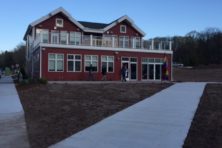What is a TIF District?
- Share
- Tweet
- Pin
- Share
The Pulse has written a lot of stories on the complex concept of a Tax Increment Finance district and each time it begs to be explained again. Here’s the primer on what you need to know about TIF districts.
To create a TIF, a municipality draws a box around an area within its boundaries that it wants to redevelop due to blight or economic development. All of the property taxes within that box make up what’s called the “base value.”
In Door County, all municipal property taxes are pooled and then divided up among the local school district, the Northeast Wisconsin Technical College, the County of Door and then a portion goes back to the municipality itself.
In a TIF, any increase in property tax revenue stays within the municipality, it does not get divvied up between the school district, technical college and county. Those entities continue to receive revenue based on the established “base value.”
This provides funds for projects within the municipality. After 20 years, the TIF expires and that property tax revenue is once again split up among those four entities.
TIF districts have been important tools in spurring development, but they are also risky. If expected development doesn’t materialize by the expiration of the TIF, the municipality is liable for that debt.



